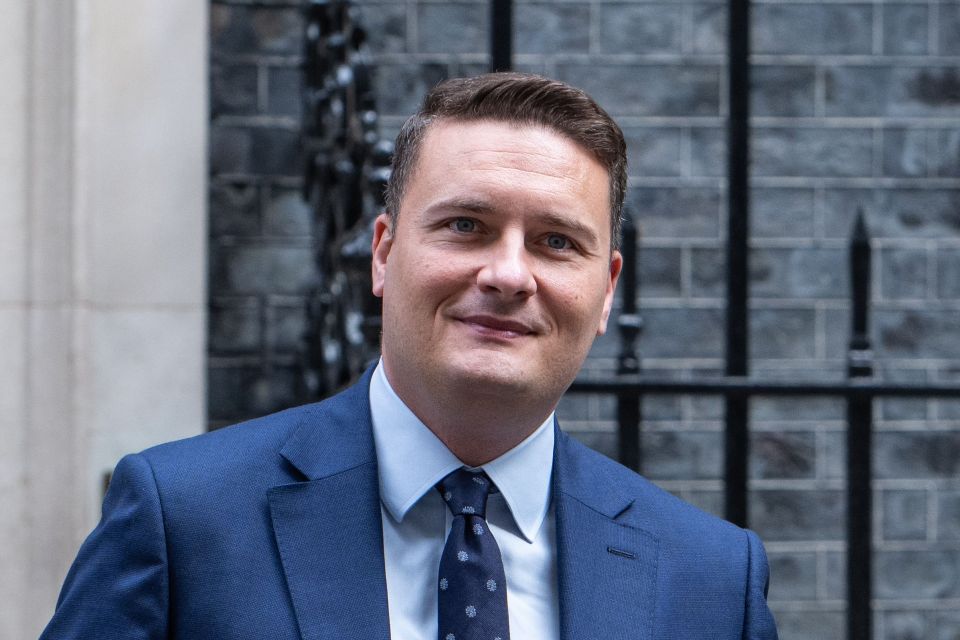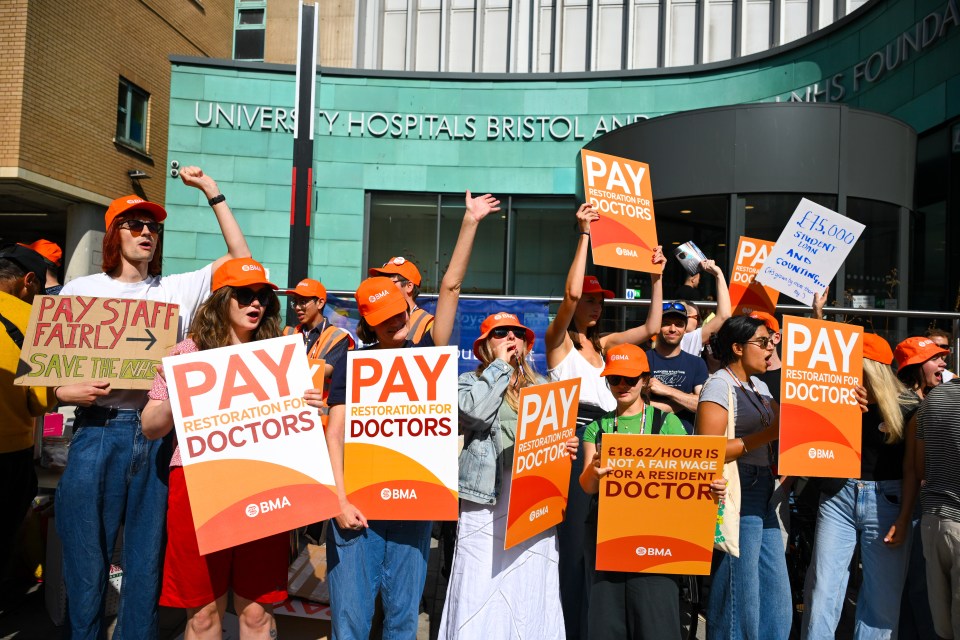FEWER than one in three junior doctors decided to go on strike last week – in a sign support for the hardline BMA union walkouts is tumbling.
Medics treated 10,000 patients more during this junior doctors strike compared with their last round of industrial action.
The numbers come from early analysis carried out by the NHS into the cost of the five-day walkout at the end of July.
The hard-left BMA doctors union is demanding an eye-watering 29 per cent pay rise for junior doctors.
Early analysis of the strikes show the NHS managed to keep 93 per cent of planned appointments, operations and tests during the walkout.
Health Secretary Wes Streeting, said: “Despite the huge effort made to keep as much planned care as possible going, let’s be clear – these damaging strikes still come at a cost to patients, other staff and the NHS.
“A majority of resident doctors didn’t vote for strike action and data shows that less than a third of residents took part.
“I want to thank those resident doctors who went to work for their commitment to their patients and to our shared mission to rebuild the NHS.
“I want to end this unnecessary dispute and I will be urging the BMA to work with the government in good faith in our shared endeavour to improve the working lives of resident doctors, rather than pursuing more reckless strike action.”
NHS CEO Sir James Mackey, NHS chief executive, said: “The NHS has come together like never before to minimise the impact of strikes on patients, and I want to thank the hundreds of thousands of staff, including many resident doctors, who worked hard to manage the disruption, protect patients, and ensure the NHS remained open for those who needed.
“While this is really good news for the vast majority of patients whose treatment went ahead, we should still acknowledge that there were thousands whose care was disrupted.
“I would urge the Resident Doctors Committee to get back to the negotiating table.”














